Posts Tagged ‘nail fungus’
What are the symptoms of a Nail fungus and how can I tell if I have a Nail Fungus Infection?
What are the symptoms of a Nail fungus and
how can I tell if I have a Nail Fungus Infection?
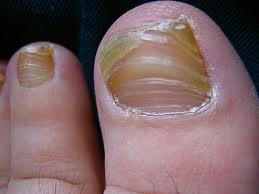 You’d think these would be fairly straightforward questions that ought to illicit simple answers. Unfortunately not only is this not true, but it is confusing enough that sometimes doctors misdiagnose nail fungus (or onychomycosis). Knowing the symptoms will assist you in helping your doctor to order the appropriate diagnostic tests so that you end up with the correct solution to your problem.
You’d think these would be fairly straightforward questions that ought to illicit simple answers. Unfortunately not only is this not true, but it is confusing enough that sometimes doctors misdiagnose nail fungus (or onychomycosis). Knowing the symptoms will assist you in helping your doctor to order the appropriate diagnostic tests so that you end up with the correct solution to your problem.
There are two basic causes of nail infections. Bacterial and fungal. Onychomiycosis, or fungal nail infection, is usually caused by a dermatophyte called Trichophyton rubrum. If not, it is caused by Candida albicans, a yeast growth (also a fungus). As nail infections differ in variety and in cause, the correct cure must be applied. A fungal infection should be treated with an anti-fungal whereas a bacterial infection should be treated with an antibiotic.
Onychomycosis affects the nail bed (skin underneath the nail) nail plate (the hard surface that we refer to as the nail) or the skin around the nail. About one third of skin infections and half of nail infections are caused by Onychomycosis. The visual signs are the abnormalities caused by the nail fungus. A white or yellowish crust appears on top of or embedded in the nail. This is the actual fungus growth. Sometimes it appears as streaks that follow the line of the nail against the infected digit (finger or toe) and sometimes it appears at the cuticle (soft area at the base of the nail). As the fungus spreads, it covers the entire surface of the nail, turning it to a milky white or yellow. Frequently it causes the nail to become ridged and deformed. This is a result of the dermaptophytes emitting destructive waste product as a result of consuming keratin. If the fungus gets underneath the nail plate, it can cause the nail bed to become irregular. This causes the nail plate to release from the bumpy nail bed and the nail becomes loose and can fall off.
If the nail fungus infection becomes severe, or if it contains Candida, the area around the nail can become swollen and sensitive to the touch. The skin may express (think ooze) pus and be very uncomfortable, even painful. These are common signs of infection. The pus is a result of white blood cells rushing to the area to fight off the infection. This is your body trying to do its job and tell you and your doctor that something is wrong.
It is most common for pus to be present in the case of bacterial infections. Thus your doctor should check for this before looking for fungal infections. To add to the confusion, there are diseases that mimic a nail fungus, including hallopeau acrodermatitis, lichen planus, nail bed psoriasis (which can occur in conjunction with fungal infection of the nail), nail bed melanoma, Reiter syndrome, yellow nail syndrome, onycholysis, and paronychia. Because of this factor, more than one test may be necessary to determine the correct course of treatment.
Different forms of onychomycosis will require different samples from the affected area. In some cases the nail can be sampled from the end or the top can be scraped for a sample, in others, the nail will need to be removed entirely. Whereas this can be a bit scary, it is also to your advantage as it then exposes the nail bed so that it can be treated.
The most typical tests performed on a nail culture to look for onychomycosis are a potassium hydroxide wash, which allows for the sample to be put under a microscope and searched for evidence of fungal growth, or a fungal culture, where the sample piece of nail is put in an environment (usually a petri dish) where it has the necessary components to thrive and create new growth, thus showing what kind of fungal infection it is. In the unlikely event that neither of these tests show positive for onychomycosis, the remaining nail sample can be pulverized and sent to a pathology lab for analysis or submitted for a bacterial culture if it is determined that the infection is bacterial instead of fungal.
Determining what kind of infection you have and what to do about it are very important when dealing with a nail infection of any kind. Having the infected area looked at by a physician, preferably a dermatologist, is the best way to deal with these diseases as they can help to rule out and diagnose serious problems as well as knowing what to do about the infection in the first place.
Are There Any Over the Counter Nail Fungus Treatments That Actually Prove Effective?
Are There Any Over the Counter Nail Fungus
Treatments That Actually Prove Effective?
As microorganisms go, fungi seem to be one of the strongest strains. It is much harder to kill them than bacteria and viruses. Dermatophyte, molds and yeasts can invade your nails and burrow deep into the nail itself, creating quite the armor of keratin for this marauding nail fungus. This makes treating onychomycoses much more difficult as even powerful antimycotic medications are not always entirely effective. So this begs the question of whether any of the available over-the-counter nail fungus treatments are effective and worth your time and money.
It is an unfortunate but true fact that very few topical treatments, whether prescription or over-the-counter, effectively treat and cure nail fungus infections.
Amorolfine
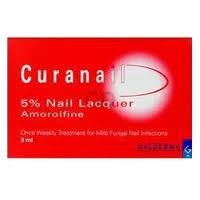 A very popular over-the-counter topical onychomycosis drug that has been proven to be effective in clinical trials is amorolfine. This topical drug is available without a prescription in a handful of countries such as the United Kingdom and New Zealand. It’s marketing name is Loceryl. Amorolfine comes as a nail lacquer and is painted on the nail like a polish. This leaves the medicine free to penetrate the nail after it has dried and allows it to work over time, just as the nail fungus does. It is active up to a week, then may need to be re-applied.
A very popular over-the-counter topical onychomycosis drug that has been proven to be effective in clinical trials is amorolfine. This topical drug is available without a prescription in a handful of countries such as the United Kingdom and New Zealand. It’s marketing name is Loceryl. Amorolfine comes as a nail lacquer and is painted on the nail like a polish. This leaves the medicine free to penetrate the nail after it has dried and allows it to work over time, just as the nail fungus does. It is active up to a week, then may need to be re-applied.
Amorolfine works by inhibiting the cell membrane of the fungus. It is only effective on distal (or lateral) subungual onychomycosis. This leaves out proximal subungual onychomycosis and superficial white onychomycosis. Knowing which type of onychomycosis you have contracted is important if you wish to choose this over-the-counter method.
Amorolfine is not available in the United States as an over-the-counter remedy, which is inconsistent with other countries’ policies. There are a few side effects but they are mild and rarely occur with proper usage. A burning sensation while applying the lacquer for the first time has been reported, but it goes away quickly. As online pharmacies become more popular, it may be possible to obtain amorolfine in the U.S. via these services who sell it over-the-counter. However cost may be an issue as Loceryl (the commercial name for amorolfine) can cost around $100.00 – $150.00 for a single 5 ml tube.
There are several over-the-counter anti-fungals that are very successful at treating skin fungus problems but are not successful nail fungus treatments.
Lamisil is a decent oral onychomycosis treatment when it is prescribed in tablet form. However it also has an over-the-counter form of a topical cream, which has not proven effective at treating nail fungus.
Lotrimin (also known as clotrimazole) is very effective at treating athelete’s foot and jock itch but has not tested or been shown as a good nail fungus treatment.
Tolnaftate (or Tinactin) is the third over-the-counter product that although it is an excellent skin fungus treatment, does little or nothing for nail fungus.
A more promising solution in terms of over-the-counter medications is an anti-fungal nail liquid of undecylenic acid. Two different papers, one published in 1965 and the other published in 2008 examined the use of undecylenic acid in treating onychomycosis. The 2008 study shows a positive effect, however in these tests the undecylenic acid was combined with cyanoacylate and hydroquinone. There is no definite proof of undecylenic acid being effective on its own.
In the realm of alternative medicine, Tea Tree Oil, (Melaleuca alternifolia) has been shown to have some positive effect on nail fungus. As it is a naturally occurring fungicide and insect repellant, applying a 100% concentration of the oil to the infected area has been reported by small studies to be able to cure 20% of the cases followed. In two-thirds of the patients followed, using Tea Tree Oil caused an improvement in the appearance of the nail fungus infection. Another study compared the twice daily application of 100% Tea Tree Oil and a 1% solution of clotrimazole. The Tea Tree Oil appeared to be slightly more effective at clearing up the nail fungus problem.
Topical products or removing the nail
All of these topical products are applied and have been tested in cases where there has not been surgery to remove the nail before applying the product. It is possible that removing the nail before treatment, via surgical, mechanical or chemical method, may improve the chances of an over-the-counter nail treatment clearing up a nail fungus as this allows the medicine to get directly to the source of the infection. If you are considering surgery or any other form of nail removal as part of your onychomycosis treatment, please ask your surgeon or doctor for information about follow up nail fungus treatments.
If you do not wish to go the surgery route to solve your onychomycosis issues but do wish to cure your nail fungus, the best chance of success still lies with taking oral antifungal agents, which are currently only available with a doctor’s prescription.
Acrylic Nail Fungus Infections
Acrylic Nail Fungus Infections
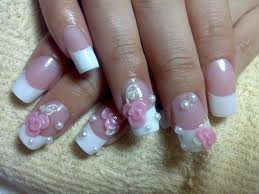 Many people choose to have acrylic nails applied to their hands. These are usually much stronger than the normal human nail and for those whose nails are very weak, it is an excellent solution to their problem of constant breakage or unattractiveness.
Many people choose to have acrylic nails applied to their hands. These are usually much stronger than the normal human nail and for those whose nails are very weak, it is an excellent solution to their problem of constant breakage or unattractiveness.
However there is the potential for a fungus to get in between the acrylic nail and the natural nail and find a great place to grow. Most salons practice excellent hygiene. However some don’t. Those are probable breeding and propagating grounds for the fungus. If you have your nails done, make sure you go to a salon that sterilizes their equipment between customers and uses antibacterial products.
Sometimes there is just nothing to be done. A fungus may just invade, no matter how hard you and your salon try. This can happen if a fungus has already attached itself to your nail, and you have an acrylic one put over the top, or if an item isn’t sterilized and it passes the fungus from one infected person onto you. A trained nail specialist is supposed to be able to recognize the symptoms of nail fungus infection and will advise against putting the acrylic nail over the infected nail. This is good, as covering an infected nail just makes the infection worse. Allowing the fungus to have a good growing environment is the worst thing you can do, and having the extra protection of the acrylic nail as well as it trapping warmth and humidity creates that positive environment. Your nail specialist will advise you on treatment options or recommend that you go see a doctor.
What if I Do Become Infected?
There are some very simple treatment options if you do get an infection underneath an acrylic nail.
- Using an over-the-counter product such as Lamisil cream to rub on the affected nail and surrounding skin every day. Apply to the top and underneath the nail
- Tea Tree Oil, which is both an antiseptic and an antifungal can also be rubbed on the afflicted nail and surrounding skin every day. Apply to the top and underneath the nail.
- Cleaning the dirt and gunk out from underneath the nail is another good method as it removes possible spores and possible food sources. Wiping the cleaned area down with rubbing alcohol afterward will help to kill off the fungi already existing.
- A last resort is to go to your doctor and discuss the prescription medicine options that are available. Many of these come with serious side effects, such as potential damage to the liver, so make sure this is something you are healthy enough to do and willing to see through to the end.
The Beer Soak Method – A Homeopathic remedy for nail fungus. How to do it and why it works.
The Beer Soak Method – A Homeopathic remedy
for nail fungus. How to do it and why it works.
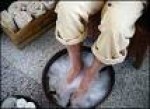 The strange yellow color that you see on your finger and toenails is not only unattractive but possibly harmful. This is caused by a fungus that lives just along the nail bed and beneath the nail itself. It is not uncommon for affected nails to become rough and thick, along with the yellowing that has already been spoken of. So if you don’t wish to take a prescription medication as recommended by a doctor, what do you do? Fortunately there is another option for folks who prefer the homeopathic approach to medicine.
The strange yellow color that you see on your finger and toenails is not only unattractive but possibly harmful. This is caused by a fungus that lives just along the nail bed and beneath the nail itself. It is not uncommon for affected nails to become rough and thick, along with the yellowing that has already been spoken of. So if you don’t wish to take a prescription medication as recommended by a doctor, what do you do? Fortunately there is another option for folks who prefer the homeopathic approach to medicine.
By combining dark beer, more commonly known as Stout, white vinegar, and acidophilus, a medicinal soak can be created to immerse the affected nails in. Acidophilus, a helpful bacteria, combined with the alcohol in the beer, work together to create an environment that is not conducive to the continued growth of the nail fungus.
So what is it about this mixture that makes it work to cure nail fungus problems?
By combining the vinegar and acidophilus, you are creating a negative climate for the nail fungus. High acidity environments kill off unproductive bacteria like fungus, while still allowing productive bacteria, like acidophilus to thrive and encourage their pro-biotic tendencies to help fight off infection. The alcohol in the beer works to soften the tissue around the nail as well as the nail itself, thus allowing the acidic environment to permeate (enter) the nail in order to do its job.
Nail Fungus Soak Recipe
Ingredients
- 1 tub or bowl large enough to soak the affected area (your feet or hands)
- 4 cups white vinegar
- 2 pints of Stout – Many beer companies make a stout or dark beer. Guinness is the most well known.
- 1 sachet of acidophilus – the standard sachet potency is 125 billion organisms.
- Nail File* Use once a week
Directions
Please note: Once you have made this mixture, the same batch can be used repeatedly for up to 48 hours. Don’t throw it out right away.
Mix the vinegar, stout and acidophilus in the soaking tub.
Soak the affected area (infected nails on your hands or feet) for 30 minutes.
After you have soaked the affected area for 30 minutes, remove your hands or feet from the mixture and wash the affected area with warm water and soap. Pat dry.
Repeat these directions twice a day for between 3 to 6 months, until the affected area clears up.
*Once a week: Immediately after removing your hands or feet from the mixture, (before washing with warm water and soap) Use a nail file to file the affected nails down, to expose new nail. Return the affected area to the mixture for an additional 30 minutes so that the newly exposed nail is able to receive the medicinal properties of the mixture, inhibiting the further growth of the fungus.
Some users may find that the area around their nails is sensitive to the soaking mixture. If this is the case, then reduce the frequency of treatment from twice a day to once a day.
This treatment should start to show efficacy within one week to one month, depending on the individual and the severity of the fungal infection. The treatment is most effective if strictly adhered to instead of missing regular treatments. Once the fungus starts to clear up, the nail in the affected areas will start to grow back strong and clear. As you trim your nails, cutting away the infected nail as you cure it, your nails will grow in healthy behind the damaged area. There should be no more yellowing or thickness in the healthy nail.
It takes about 12 weeks for the nail to grow in fully and replace itself from infected to unaffected area.
Topical Medications to Treat Nail Fungus
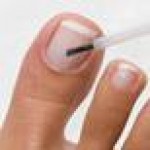 Topical Medications to Treat Nail Fungus
Topical Medications to Treat Nail Fungus
There are a wide variety of treatments available to cure nail fungus. Some of these treatments are oral and some are topical. Topical treatments are available as prescription, over-the-counter and natural or alternative. Most people prefer using a topical treatment to an oral medication because the topical medication has far fewer risks associated with its use.
The topical prescription medication Penlac (otherwise known as Ciclopirox) is a relative newcomer to the U.S. market. Approved by the FDA in 1999 and in Canada in 2004, this was a wonderful improvement in the treatment of nail fungus as up until then, prescription treatments were all systemic, the regimens were long, and ran the risk of damaging the internal organs.
Penlac delivers its antifungal medication in nail polish form. The main ingredient in Penlac is Ciclopirox, a broad spectrum antifungal. This medication works via its delivery method. Because the medication is painted directly onto the affected area, it has time to penetrate the nail and deliver the necessary antifungal boost to the nail bed, which is where the fungus grows. The concept of Penlac is to kill the fungus where it lives, underneath the nail, so that the infection is permanently eliminated. This avoids the necessity of taking oral antifungal medications, which work systemically (throughout the body) and have more side effects, including possible organ damage. Application of Penlac is suggested daily to the infected nail and surrounding tissue for up to 12 weeks.
In today’s modern world, you can choose from allopathic, or prescription remedies, and natural, or homeopathic remedies. The natural remedies are frequently available at your pharmacy or online. Many products are available to cure nail fungus but one of the most effective is ClearFungus. ClearFungus is available on line and comes with a money back guarantee. The website has many testimonials available for you to read. ClearFungus is a natural fungicide and its main ingredient, combined with other natural products, work together to promote healthy recovery for your skin and nails.
The natural health market has several topical products and they usually include the same basic ingredients. The difference ends up being in the price. When looking for a natural remedy, make sure you have access to the list of ingredients, whether on the product packaging or on a website. A natural remedy should include an active fungicide and preferably ingredients that encourage healthy nail re-growth and conditioning for the surrounding skin. An excellent option for a topical nail fungicide is Tea Tree Oil, which can be purchased at any health food store and many pharmacies. If you have the option, research has shown that a spray, lacquer, or heavy ointment, are all more effective than a cream.
How you choose to treat your nail fungus infection is something that you and your doctor need to decide. If you choose to go with a non-prescription product, make sure that you do your research so that you find a product that will work best for you. Remember that natural medicine is strong and can fix many problems (as it has been doing for centuries) but that prescriptive medicine is a derivative of natural medicine as many prescription cures come from a similar chemical make-up. There are times when a prescription medicine may be necessary, especially in the case of a severe infection. However you choose to treat your nail fungus, research all possible medication interactions and side effects and keep track of anything that may occur. Because no one understands your body better than you.